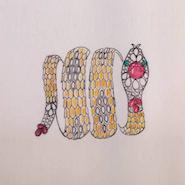 Sketch of Bulgari Serpenti piece
Sketch of Bulgari Serpenti piece
Italian jeweler Bulgari is paying tribute to the enduring symbolism of the snake through an exhibit at the Museo di Roma-Palazzo Braschi.
Opening to the public on March 10, SerpentiForm explores humans’ longstanding use of serpent iconography to represent concepts as diverse as rebirth and seduction. This installation, curated by Bulgari heritage curator Lucia Boscaini and the house’s brand heritage department, allows the jeweler to showcase the ways the snake has intertwined with its own history.
Slithering through time
SerpentiForm is promoted by Capitoline Superintendency for Cultural Heritage. The exhibit was designed and set up by Bulgari, with organizational support from Zètema Progetto Cultura.
As early as ancient times, Romans and Africans have incorporated the snake shape into jewelry, using it as a good luck charm. In Chinese culture the snake represents creation, fertility and immortality.
In more modern times, Bulgari fashioned the snake into bracelet watches in the 1940s, establishing the Serpenti shape that is now an integral part of the brand’s image.
This exhibit extends beyond Bulgari’s use of the symbol, looking at how others in the art, design, fashion, photography and jewelry space have taken inspiration from the snake. These incarnations are as diverse as work from whimsical artists Keith Haring and Niki de Saint Phalle to photographs by Robert Mapplethorpe and Richard Avedon, who tended to use the snake to show vanity, seduction or alterations.
Work by Keith Haring
SerpentiForm will be on view until April 10.
“SerpentiForm is a tribute to a particularly evocative motif that is deeply linked to the Greek and Roman roots of the maison,” said Bulgari CEO Jean-Christophe Babin in a brand statement. “The exhibition is also an opportunity to start a useful and stimulating discussion: jewelry, an expression of the aesthetic sense and of the trends of a period, is often inspired by art because it shares with it an attention to detail and the urge to shape matter to give it a new form and new life.”
A companion book, “Serpenti in Art,” traces the snake through its appearances in modern and contemporary work, featuring portraits of artists along with pictures of their pieces. Published by Canvas, the book covers work including sculpture, painting and home décor, with images of Bulgari’s Serpenti pieces aside their original sketches.
As part of its work with Palazzo Braschi, Bulgari will help to fund the installation of a new lighting system for the steps of the museum. This is the latest initiative by Bulgari to invest in the cultural heritage of its hometown. Bulgari is also investing in Italian heritage projects as a way to give back, while also celebrating its 130th anniversary, with a $2 million pledge to restore Rome’s Spanish Steps over a two-year period.
The project, slated to begin in 2015, will work to restore the iconic Italian landmark after Italian prime minister Matteo Renzi asked for private investors to help maintain monuments throughout the country. With Bulgari behind the restoration, the project will likely leave an impression on travelers who visit the Spanish Steps (see story).
“The exhibition designed by Bulgari and set up in Palazzo Braschi illustrates how successful can be the collaboration between public and private sectors to the benefit of all citizens,” said Capitoline Superintendent for Cultural Heritage Claudio Parisi Presicce. “Focusing on a sign that, since antiquity, has represented an highly powerful icon in collective unconscious, the exhibition represents a new artistic contribution on this theme.
“Moreover, this initiative will allow to realize a new lighting system for the grand staircase of the Museum with no additional costs for the Public Administration."

